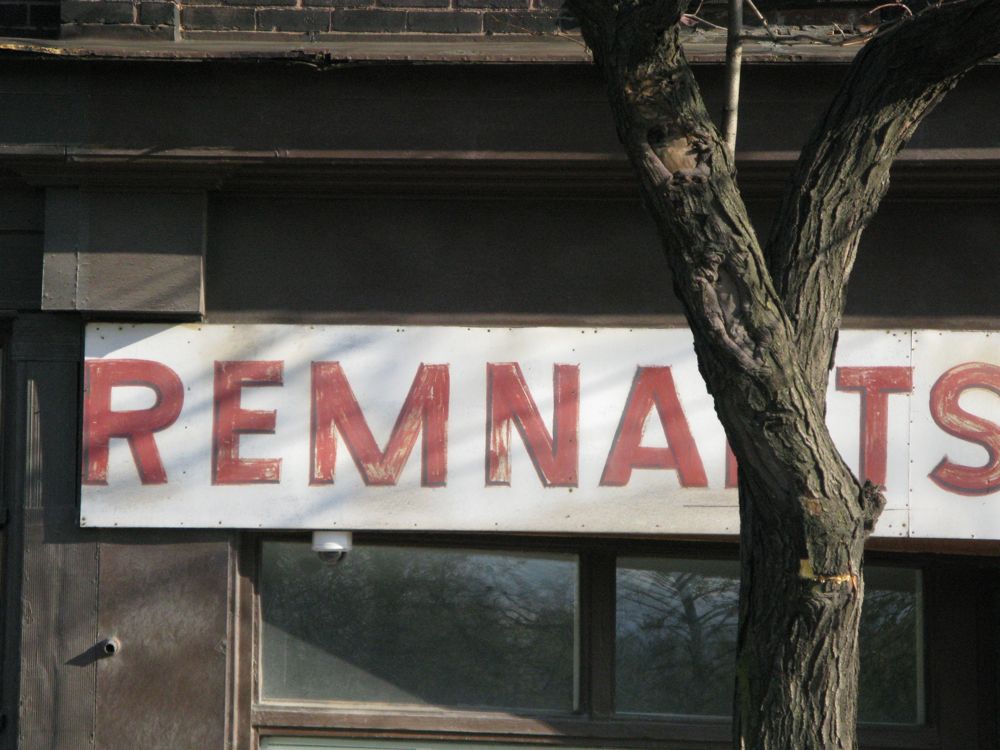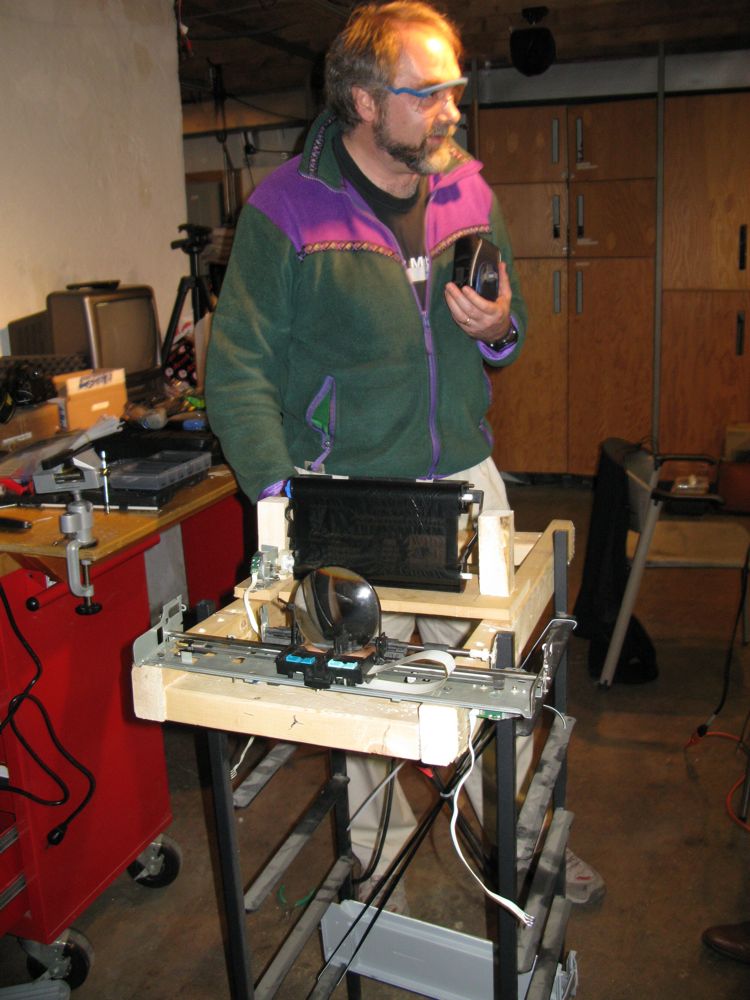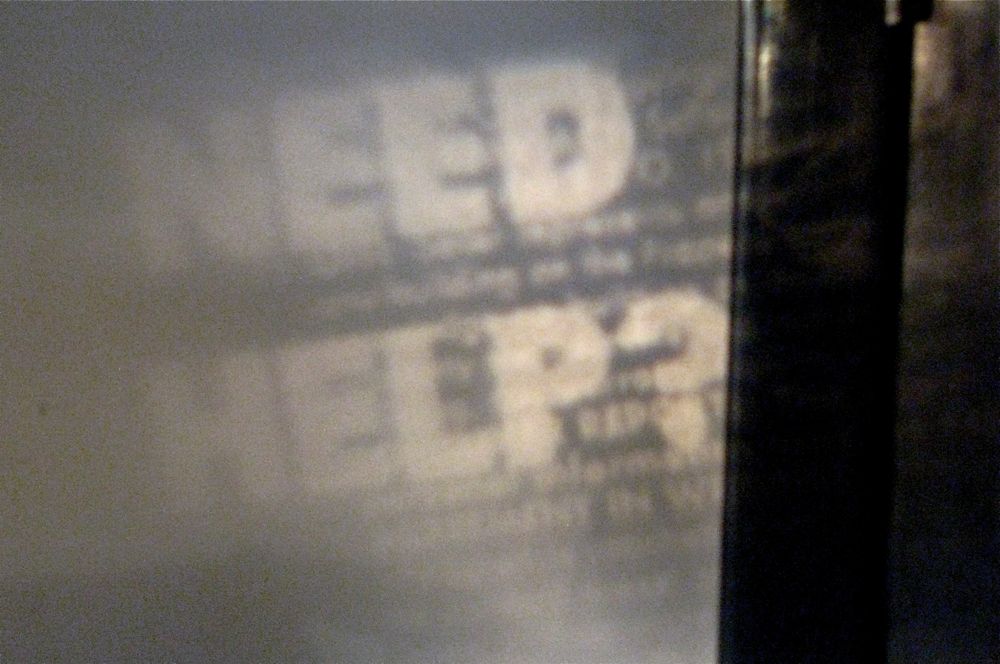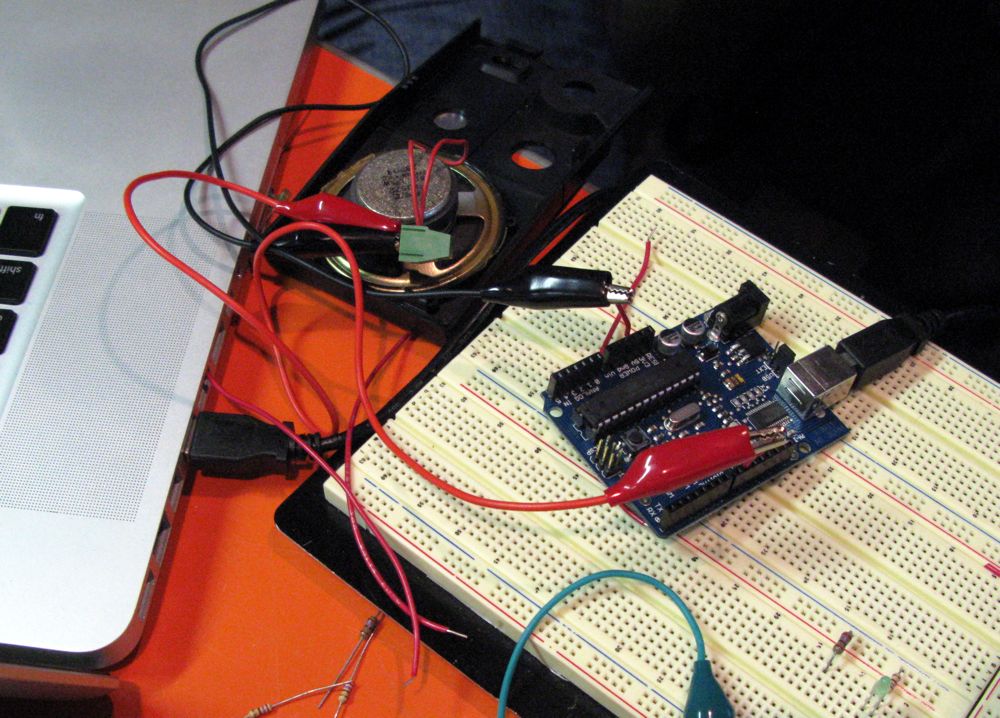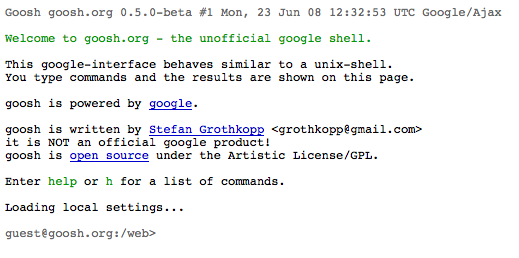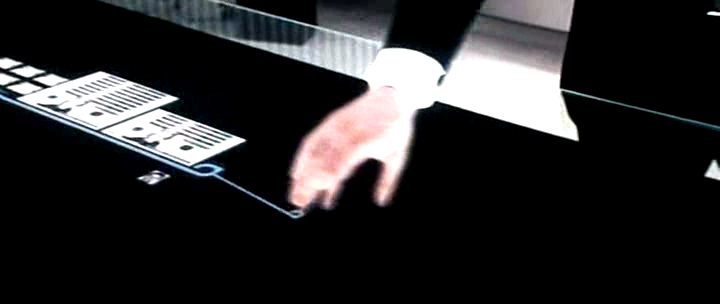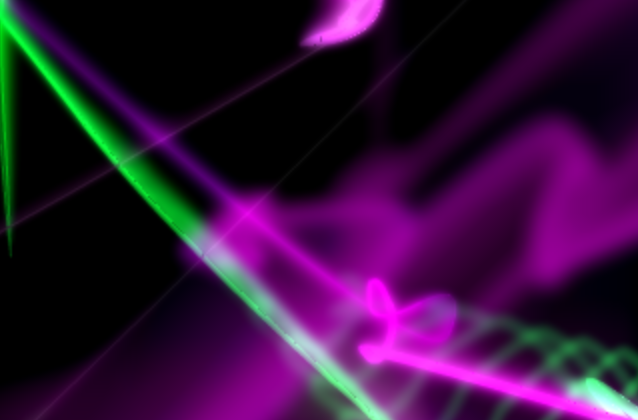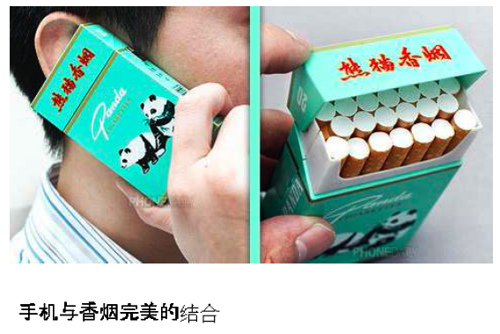So a bunch of us started a project yesterday as part of the Hacking as a Way of Knowing workshop. Ours is, of course, the best project. We have motors that drive a reading of a fax carbon based on a “knowledge radio” on the Day of Digital Humanities.
Category: Playful or Cool
Hacking as a Way of Knowing – Digital History
Today was the first day of the Hacking as a Way of Knowing e-waste fabrication workshop. Above you can see the text from a fax thermal printer roll projected onto a wall. (At least I think that’s what it is.) Below is an Arduino connected to a a speaker. Stéfan has working on taking a RSS feed and triggering events so we can connect stuff to it to create cool stuff.
We got talking about why fabrication is taking off. Turkel has his lab. Matt Ratto at the Univerity of Toronto has a lab (with a great name – CriticalMaking.com. Some of the reasons are:
- There is a growing amount of electronic waste visible and available to be repurposed (and reminding us of how much we waste.)
- As manufacturing moves out of North America we respond by exploring micro and personal manufacturing through fabrication. It is possible that this is the future of manufacturing here.
- As manufacturing becomes so complex that we can’t imagine how everyday things are made, fabrication gives us a way of thinking about the making of what’s around us. It allows us to reappropriate the everyday.
- The costs of fabrication (tools and materials) have dropped to the point where it is a viable hobby. What will fabrication look like when it is not longer only for those with skills?
- We have what I call an “Ikea” effect where the labour and costs for certain items is shifting. Ikea moved part of assembly (the end assembly that takes relatively little skill) to the buyer by creating smarter hardware. They shifted engineering smarts to joining technology that could be used by anyone. Fabrication benefits from a shift in smarts so that assembly can doable.
goosh.org – the unofficial google shell.
From Steve Ramsay’s twitter I discovered goosh.org – the unofficial google shell. What an idea! I’m not sure what I would use it for, but it seems dangerously close to brilliant.
Hacking as a Way of Knowing – Digital History
At the end of the week I’ll be going to Toronto for what I expect will be one of the most interesting workshops ever. William J. Turkel at Western has organized a hands-on workshop on Hacking as a Way of Knowing to reflect on electronic waste and data about the environment. The short description of the purpose is,
This three-day workshop will explore the theme of E-waste and environmental data. Working in small groups, participants will be given the task of hacking some typical consumer e-waste to create reflective technological assemblages that incorporate ‘nature’ in some form while calling one or more of our basic assumptions into question.
This is not so much about building something, but about thinking about how fabrication (hacking) is a way of thinking through AND in this case we will be thinking through the environment and all the waste around computing. I suspect I’m going to be embarassed by how much I waste.
MK12: Quantum of Solace Interface
I just blogged about the interface ideas in Stranger than Fiction from MK12. Turns out they were behind the interface for MI5 in the latest James Bond – see UI’s from Movies – Quantum of Solace and see the response from MK12. For images from the movie see NUI Group: Quantom of Solace images.
April Interface: Opera Face Gestures
Calen H. sent me a link to a very funny YouTube video on Opera Face Gestures. The idea is to control the Opera browser by making faces. Almost good enough to be implemented.
THRU YOU | Kutiman mixes YouTube
From Peter O and others the amazing YouTube remix, THRU YOU | Kutiman mixes YouTube. Alarmingly good music.
And from Peter R a link to Extreme Sheet LED Herding. Flock remix.
Neave Imagination …big wobbly elephants
Neave Imagination (…big wobbly elephants) is a lovely Flash toy that works great on a large screen.
Play with the big wobbly lines and you’ll soon have an active imagination.
Try his other toys – many are beautiful and they work on a 30″ screen.
Ruecker’s One Minute Movies
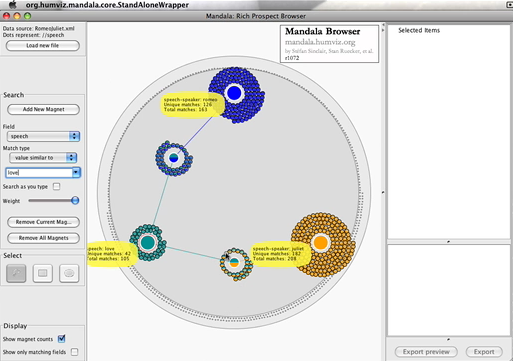
My colleague Stan Ruecker has been create short online movies of humanities computing software tools he is involved in like the Mandala Browser and the Digital Profiles rich prospect browser. These are in the tradition of videos like A Vision of Students Today from the Digital Ethnography folk. There is also the TEI Encoding of Dylan’s Subterranean Homesick Blues. Neat idea – we should get more comfortable with YouTube as a way of conveying ideas.
Taco Lab Blog: Siftables and American Shanzhai?
The Taco Lab who are probably best known for the Siftables (small cookie-sized tile computes that sense each other) shown at TED have a blog with some interesting posts like this one on American Shanzhai?. Shanzai literally means “mountain fortress” or the hideout of bandits and it refers to pirate activities like hacking cheap copies of consumer goods (that are heavily marked up.) It is now beginning to refer to a creative subculture of improving or altering electronics outside state (and IP) control. Thus the image above is from the Taco Lab blog and is a example of this creative shanzai – in this case a cell-phone/cigarette pack whose value is in its uniqueness. This got me thinking of all the open projects out there that make it easier to hack things like:
- TuxPhone – a project to develop open hardware and software for a cell phone.
- Arduino – an open electronics prototyping platform that’s great for interactive art projects
- LilyPad Arduino – an open device that is light enough for wearables and e-textile projects
- William Turkel’s Fabrication Lab – a unique (to my knowledge) humanities lab
